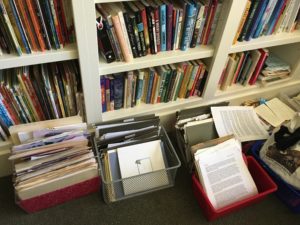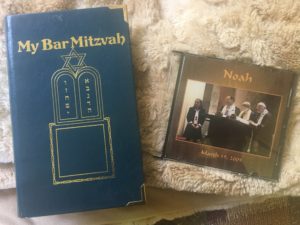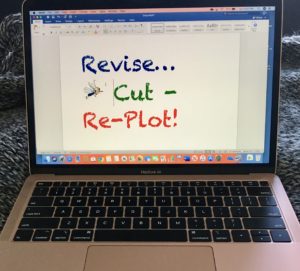
On November 13, 2021, we celebrated the birth of 20 fabulous new children’s books, written and illustrated by the talented members of the Rocky Mountain chapter of the Society of Children’s Book Writers and Illustrators. The event was sponsored by the Second Star to the Right Book Shop in Denver, CO and was both in-person and virtual! For those of you who weren’t able to sing “Happy Birthday” or eat cupcakes with us that day, I’ve pasted the titles and synopses* below. Please consider purchasing them from your favorite independent bookstore or borrowing them from your local library.
PICTURE BOOKS
HELLO, TREE
Written by Ana Crespo and illustrated by Dow Phumirik
When a wildfire comes roaring into the forest, all the animals and humans flee. But all the tree can do is wait. Wait until many days and nights pass. Wait until the fire loses the battle. And wait until the forest is still before the forest can be reborn and the animals and the girl can come back. Inspired by the 2013 Black Forest fire, and told from the viewpoint of a tree watching its home destroyed, HELLO, TREE is about the kinship between humans and nature, and preservation of the environment.
SLOW DOWN, TUMBLEWEED!
Written by Haven Iverson and illustrated by Robert Sayegh
In our fast-paced society, children are often missing the value of slowing down. SLOW DOWN, TUMBLEWEED! is about a wild and roaming tumbleweed who thinks the world is only interesting if you rush through life. Then she gets caught on a fence and is forced to slow down. As she learns to sit in stillness and quiet, Mabel notices the beauty of the world around her―the music of wind chimes, the shapes in the clouds, the long eyelashes of a heifer. She sees there is so much that is interesting and beautiful right here, right now. You don’t have to chase it. This lovely book teaches children the importance of slowing down, pausing to take a breath, and cultivating mindfulness.
KINDNESS IS A KITE STRING
Written by Michelle Schaub and illustrated by Claire LaForte
This compelling book illustrates simple, yet impactful ways, to spread kindness and brighten the lives of others. Through poetry, the inspiring words uplift young readers, planting seeds of empathy, kindness and community support.
OVER BEAR! UNDER, WHERE?
Written by Julie Hedlund and illustrated by Michael Slack
Over and Under are two friends, and they’re enjoying a day at the park. They go on the swings (Over goes over Under) and the seesaw (Under is under Over). They meet a hot-dog dog (who joins them for a hot dog). And then they spot . . . a bear! (Unbearable!) But is he really the overall scary creature they first understand him to be?
In this hilariously punny story that will have readers laughing out loud as they pick apart the wordplay, a pair of pals overcome their fears as they discover that friendship underpins all.
WHO LOVES THE DRAGON? and JUST BE YOURSELF DRAGON!
Written by Bianca Schulze and illustrated by Samara Hardy
In this interactive follow-up to Don’t Wake the Dragon, our beloved Dragon is wide-awake and preparing to celebrate one of the kingdom’s most important events of the year: the annual Friendship Festival! It’s a time for everyone to gather and have fun, all honoring their meaningful friendships. But on the day of the feast, the cooks are called away to cater to the Queen and the knights must report for special duty in the Enchanted Forest. With everyone gone, Dragon is upset and worried that this year’s Friendship Festival is doomed. With colorful and humorous illustrations throughout, this read-aloud picture book encourages kids to interact with the text on every page. Young readers will love waving to characters, blowing kisses, dancing, and more on this fun ride alongside Dragon and her adorable friends.
In the third book of this delightfully fun series, Dragon is nervous about her first day of school. She’ll need readers’ help to soothe her anxieties and ease her nerves. Dragon is excited about having story time with the fortune-teller, learning to count while juggling, exercising with the knights, and – best of all – being with her friends. But when the day finally arrives, Dragon is overwhelmed and scared! She’s got a bad case of first day jitters, and something goes wrong during all of her morning activities. She can’t wait to have a break at lunch . . . until suddenly Dragon is left all alone and must summon the courage to make all new friends on her own.
I’M A HARE, SO THERE!
Written and illustrated by Julie Rowan-Zoch
When a chipmunk mistakes Hare for a rabbit, Hare puts him in his place. But actually, the chipmunk is a SQUIRREL. Or so he says. Ever wondered about the difference between a turtle and a tortoise? Or a sheep and goat? So have Rabbit and Chipmunk—er, I mean, Hare and Squirrel! This hilarious look at dynamic duos in the animal kingdom pokes fun at the lookalike animals we all love, while delivering a gentle lesson on appreciating differences and standing up for what you know to be true about yourself.
TAD LINCOLN’S RESTLESS WRIGGLE: Pandemonium and Patience in the President’s House
Written by Beth Anderson and illustrated by S. D. Schindler
Tad Lincoln’s boundless energy annoyed almost everyone but his father, President Abraham Lincoln. But Tad put that energy to good use during the tough times of the Civil War. Abraham Lincoln guided Tad’s wriggle on visits to hospitals, to the telegraph office, and to army camps. Tad greeted visitors, raised money for bandages, and kept his father company late into the night. This special and patient bond between father and son was plain to see, and before long, Tad had wriggled his way into the hearts of others as well. Beth Anderson and S.D. Schindler follow Tad’s antics during the Civil War to uncover the generous heart and joyful spirit that powered Tad’s restless wriggle.
WATERCRESS
Written by Andrea Wang and illustrated by Jason Chin
Driving through Ohio in an old Pontiac, a young girl’s parents stop suddenly when they spot watercress growing wild in a ditch by the side of the road. Grabbing an old paper bag and some rusty scissors, the whole family wades into the muck to collect as much of the muddy, snail covered watercress as they can. At first, the girl is embarrassed. Why can’t her family get food from the grocery store? But when her mother shares a story of her family’s time in China, she learns to appreciate the fresh food they foraged. Together, they make a new memory of watercress.
MIDDLE GRADE NON-FICTION
Stars of Latin Pop/Estrellas Del Pop Latino series
by Jolene Gutierrez
SOFIA REYES
Sofía Reyes is on her way to becoming one of the top Latin Pop Stars in the world! Has she always loved music? How did social media help her? How has her creativity improved her career? Learn about Sofía, her rise to stardom, and how she’s supporting other musicians.
SHAKIRA
Shakira is one of the top Latin Pop Stars in the world! Has she always been so talented? What lifelong goals does she have? How is she changing the world, one child at a time? Learn about Shakira, her rise to stardom, and the charities she supports.
J BALVIN
J Balvín is one of the top Latin pop stars in the world! When did he start singing? How have his business skills helped his music career? Why are meditation and fashion so important to him? Learn about J Balvín and his rise to stardom.
OZUNA
Ozuna is a Latino musician who is breaking records and winning awards! Has he always loved music? How did YouTube change his life? How has collaboration improved his career? Learn about Ozuna, his rise to fame, and how he’s giving back to his community.
BFF OR NRF (NOT REALLY FRIENDS)? A GIRLS GUIDE TO HAPPY FRIENDSHIPS
Written by Jessica Speer and illustrated by Elowyn Dickerson
Friendships are tough to navigate, even for adults. The preteen years can be particularly sticky, but we’ve got your back! Packed with fun quizzes, colorful illustrations, and stories about girls just like you, BFF or NRF (Not Really Friends) is the ultimate interactive guidebook to help you learn the ins and outs of friendship. Explore the topics of gossip, bullying, and feeling left out, along with ways to strengthen the friendships that mean the most to you. Author Jessica Speer is an expert on post-pandemic friendships with experience in helping tweens, teens, and young adults navigate their social relationships.
MIDDLE GRADE FICTION
ALONE
by Megan E. Freeman
When twelve-year-old Maddie hatches a scheme for a secret sleepover with her two best friends, she ends up waking up to a nightmare. She’s alone—left behind in a town that has been mysteriously evacuated and abandoned. With no one to rely on, no power, and no working phone lines or internet access, Maddie slowly learns to survive on her own. Her only companions are a Rottweiler named George and all the books she can read. After a rough start, Maddie learns to trust her own ingenuity and invents clever ways to survive in a place that has been deserted and forgotten.
As months pass, she escapes natural disasters, looters, and wild animals. But Maddie’s most formidable enemy is the crushing loneliness she faces every day. Can Maddie’s stubborn will to survive carry her through the most frightening experience of her life?
CAPTAIN NEMO- THE SERPENT’S NEST
by Jason Henderson
Gabriel Nemo has never been your normal, everyday twelve-year-old. As a descendant of the famous Captain Nemo, he’s determined to use his Nemotech legacy for good. He and his best friends, Peter and Misty, spend their days studying at the elite Nemo Institute and their spare time trying to solve the mystery of what happened to the original Captain Nemo and his crew.
An engraved anchor pin from the abandoned Nautilus leads the trio to Cardiff Bay in Wales, where they find signs of mysterious underwater rescues. But before long, their search is interrupted when they cross paths with a new kind of sea serpent. Can Gabriel and his friends solve the mystery of the Serpent’s Nest before things turn deadly?
THE LOST LANGUAGE
by Claudia Mills
Sixth grader Betsy is the one who informs her best friend, Lizard, that thousands of the world’s languages are currently threatened by extinction. Betsy’s mother is a linguistics professor working frantically to study dying languages before they are lost forever. But it is Lizard who, gripped by the magnitude of this loss, challenges Betsy, “What if, instead of WRITING about dying languages like your mom, you and I SAVED one instead?”
As the girls embark on their quest to learn as much as possible of the near-extinct language of Guernésiais (spoken on the Isle of Guernsey, off the coast of France), their friendship faces unexpected strains. With Lizard increasingly obsessed with the language project, Betsy begins to seek greater independence from her controlling and charismatic friend, as well as from her controlling and charismatic mother. Then tragedy threatens Betsy’s life beyond what any words can express, and Lizard does something unthinkable.
Perhaps lost friendships, like lost languages, can never be completely saved.
THE NAMER OF SPIRITS
by Todd Mitchell
In the frontier village of Last Hope, people dismiss twelve-year-old Ash Narro as a flighty child who claims to hear the true names of things. But when enraged forest spirits attack, Ash shows that the names she hears have power.
After taming a destructive forest spirit, Ash teams up with Fen, a wild forest boy, and embarks on an unusual journey to save her village. In this steampunk eco-fantasy, the perils of deforestation and the power of friendship are explored through a fantastical adventure involving giant mistcats, tempestuous forest spirits, a supernatural puppy, and a girl with a special gift for shaping what things become.
THE MANY MEANINGS OF MEILAN
by Andrea Wang
Meilan Hua’s world is made up of a few key ingredients: her beloved grandmother, Nainai, the bakery her family owns in Boston’s Chinatown, and her favorite Chinese fairytales. But when Nainai passes, the family has a huge falling-out that sends Meilan, her parents, and her grieving grandfather on the road in search of a new home. They take a winding path across the country before landing in Redbud, Ohio. But everything there is the opposite of Chinatown. Being renamed “Melanie” at school only makes it worse. Meilan decides she is many Meilans. Sometimes she is Mist, cooling and invisible; other times, she’s Basket, carrying her parents’ hopes and dreams and her guilt of not living up to them; and occasionally she is bright Blue, the way she feels around her new friend Logan. Meilan tries to keep her facets separate until an injustice at school shows her the power of bringing her many selves together.
Written in stunning prose by award-winning author, Andrea Wang, THE MANY MEANINGS OF MEILAN is an exploration of all the things it’s possible to grieve, the injustices large and small that make us rage, and the peace that’s unlocked when we learn to find home within ourselves.
YOUNG ADULT FICTION
THE NETAHS, INTO THE WILDERNESS
by Lisa K. Cobb
Josh’s new foster sister Rose is a skunk, and his parents have no idea. She may look like an adorable toddler, but she has a feral attitude, an aversion to bathing, and a smell that follows her no matter where she goes. Whenever Josh’s parents aren’t looking, Rose talks to him like an adult and shows him her fur and teeth. Eventually, Rose reveals that she is a Netah, an animal shape-shifter sent to oversee Josh’s transformation as he comes of age. The bumps on his head aren’t just bumps; they’re antlers. Josh is a halfling, the son of his Netah elk father who abandoned him when he was born.
Josh is shocked to realize that many people in his life are also Netahs. The lunch lady at his school is a heron, his friend is a raven, and the bully who always pushes him in the hallways is actually a bear. It’s up to them to make sure Josh doesn’t expose their true nature to the other humans. When Josh finally does transform, the Netah council says he must pass three tests to join their society. Trapped in his animal form, Josh goes into the lush Colorado wilderness with four of his new Netah friends to master his ability to transform, but also to prove himself trustworthy to the council. If he doesn’t succeed, he will risk being an outsider forever.
*All synopses were edited from the listings on www.amazon.com.
 They’re apparently made of a softer rubber and have a unique tread that’s designed to literally push the snow out of your way. They sounded perfect, so we ordered them.
They’re apparently made of a softer rubber and have a unique tread that’s designed to literally push the snow out of your way. They sounded perfect, so we ordered them.





 I have very strong childhood memories of getting the Highlights for Children magazine in the mail. First of all, it was mail – for me! (And my brothers, but mostly for me.) I’d spot it on the kitchen counter, whisk it off to my bedroom, and immediately turn to the hidden pictures page. Then I’d search and search until I found every last rake, spoon, ice cream cone, and whatever else was listed at the bottom of the page! Today, Highlights publishes entire workbooks of these puzzles. They even have an app.
I have very strong childhood memories of getting the Highlights for Children magazine in the mail. First of all, it was mail – for me! (And my brothers, but mostly for me.) I’d spot it on the kitchen counter, whisk it off to my bedroom, and immediately turn to the hidden pictures page. Then I’d search and search until I found every last rake, spoon, ice cream cone, and whatever else was listed at the bottom of the page! Today, Highlights publishes entire workbooks of these puzzles. They even have an app. .
.

















































